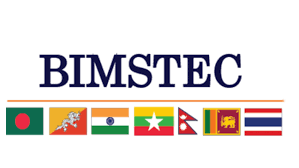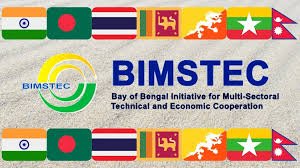Fast-Tracking BIMSTEC Free Trade Agreement
Introduction to BIMSTEC
The Bay of Bengal Initiative for Multi-Sectoral Technical and Economic Cooperation (BIMSTEC) is a regional organization that includes countries from South Asia and Southeast Asia. This group comprises Bangladesh, Bhutan, India, Myanmar, Nepal, Sri Lanka, and Thailand. The BIMSTEC Free Trade Agreement (FTA) aims to enhance trade and economic collaboration among these nations by reducing tariffs and promoting free trade.
Recent Developments in BIMSTEC FTA
Recently, BIMSTEC member countries have prioritized the fast-tracking of the BIMSTEC Free Trade Agreement. This decision comes as part of an effort to accelerate economic recovery and integration among member states, especially in the post-pandemic era. The proposed agreement seeks to eliminate barriers to trade, foster investment, and improve economic cooperation in the region.
Key Features of the BIMSTEC Free Trade Agreement
The BIMSTEC FTA is designed to address several critical aspects of regional trade:
- Tariff Reduction: The agreement aims to reduce and eventually eliminate tariffs on a range of goods and services.
- Investment Facilitation: It seeks to create a more conducive environment for cross-border investments.
- Trade Efficiency: The agreement includes measures to streamline customs procedures and enhance logistical operations.
- Sectoral Cooperation: It focuses on enhancing cooperation in various sectors, including agriculture, technology, and tourism.
Challenges and Opportunities
While the BIMSTEC FTA presents significant opportunities for economic growth, it also faces several challenges. Key among them are differing economic priorities among member states and the need for substantial policy adjustments. However, the agreement’s potential benefits include increased market access, economic diversification, and enhanced regional stability.

Why This News is Important
Economic Integration and Growth
The fast-tracking of the BIMSTEC Free Trade Agreement is crucial for fostering economic integration among member countries. By removing trade barriers and facilitating investment, the FTA is expected to boost economic growth in the region. This integration will help member states leverage each other’s strengths, leading to a more balanced and sustainable economic development.
Post-Pandemic Recovery
In the wake of the COVID-19 pandemic, many countries are focusing on economic recovery. The BIMSTEC FTA is seen as a strategic move to accelerate recovery by enhancing trade and investment flows. This effort aligns with the broader goal of rejuvenating economies that have been adversely affected by the pandemic.
Strengthening Regional Cooperation
The BIMSTEC FTA signifies a commitment to deepening regional cooperation. By working together to streamline trade and investment processes, member states can strengthen their economic ties and address common challenges. This enhanced cooperation is vital for creating a more resilient and interconnected regional economy.
Historical Context
Formation of BIMSTEC
The Bay of Bengal Initiative for Multi-Sectoral Technical and Economic Cooperation (BIMSTEC) was established in 1997. It aimed to promote regional collaboration across various sectors, including trade, technology, and economic development. Over the years, BIMSTEC has evolved to address the changing economic and geopolitical landscape of the region.
Previous Trade Agreements
Before the BIMSTEC FTA, member countries had engaged in various bilateral and multilateral trade agreements. The BIMSTEC FTA represents a significant step towards a comprehensive regional trade agreement, complementing other trade initiatives and agreements in the region.
Key Takeaways from the BIMSTEC Free Trade Agreement
| Serial Number | Key Takeaway |
|---|---|
| 1 | The BIMSTEC FTA aims to reduce tariffs and promote free trade among member countries. |
| 2 | The agreement seeks to enhance investment and trade efficiency in the region. |
| 3 | Post-pandemic economic recovery is a major driver behind the fast-tracking of the FTA. |
| 4 | The FTA represents a significant step in regional economic integration and cooperation. |
| 5 | Challenges include varying economic priorities and the need for policy adjustments among member states. |
Important FAQs for Students from this News
1. What is the BIMSTEC Free Trade Agreement?
- The BIMSTEC Free Trade Agreement (FTA) is a proposed trade agreement among member countries of the Bay of Bengal Initiative for Multi-Sectoral Technical and Economic Cooperation (BIMSTEC). It aims to reduce tariffs and barriers to trade, promote investment, and enhance economic cooperation.
2. Which countries are members of BIMSTEC?
- BIMSTEC members include Bangladesh, Bhutan, India, Myanmar, Nepal, Sri Lanka, and Thailand.
3. Why is the BIMSTEC FTA being fast-tracked?
- The FTA is being fast-tracked to accelerate economic recovery, especially in the wake of the COVID-19 pandemic, and to deepen regional economic integration and cooperation.
4. What are the main goals of the BIMSTEC FTA?
- The primary goals are to reduce tariffs, facilitate investment, streamline trade processes, and enhance cooperation in sectors such as agriculture, technology, and tourism.
5. What challenges might the BIMSTEC FTA face?
- Challenges include differing economic priorities among member states, the need for policy adjustments, and potential resistance to changes in trade practices.
Some Important Current Affairs Links
















